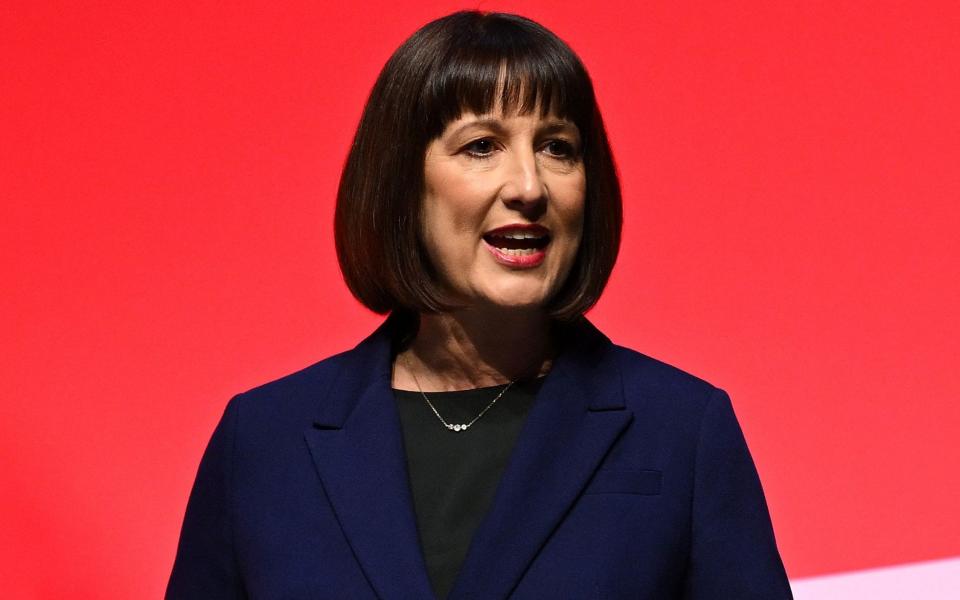
Rachel Reeves will be urged to raid the pension savings of up to 6m middle-class workers in plans presented by Treasury officials ahead of her first Budget.
The chancellor is expected to consider a proposal for a flat rate of 30pc of pension tax relief – meaning that those who pay a higher rate will pay an effective tax charge of 10pc on pension contributions for the first time.
The plan will affect up to 6m higher and additional rate taxpayers, with the richest saving around £2,600.
Ms Reeves has spoken to limit relief in pensions but has distanced herself from the proposals, insisting she has “no plans” to change the current regime.
Pension contributions are tax deductible. This means that basic rate payers get relief equal to 20pc of their payments to offset the income tax they would have paid. Higher rate payers – those earning more than £50,270 – get 40pc relief, and most additional rate payers earning more than £125,140 get 45pc.

This rule costs the Exchequer more than £50bn per year through income tax relief, company tax relief, zero tax on growth in pensions and the fact that employers do not have to pay National Insurance for employer pension contributions.
The Treasury has long wanted to save pension savings and has detailed plans drawn up for the attack given to successive chancellors since the coalition government took power in 2010.
Proposals on the table include flat rates of 20pc and 30pc. Sources suggested a 30pc rate would be more politically acceptable as it could be presented as a gift to millions of basic rate taxpayers, effectively meaning their pensions were raised by the Government.
However, this will leave higher and additional ratepayers having to pay an effective 10pc or 15pc charge.
Any change will trigger anger in the pension industry and lead to concerns that many savers will stop paying in. It will also mean that most earners can end up being taxed twice on the same income, because withdrawals after retirement are also liable for income tax.
A flat rate of 30pc would equate to a £2.7bn tax increase, says the Institute for Fiscal Studies (IFS). The policy will save the bottom 80 per cent around £230 a year, while the top 10 per cent will see an average tax increase of just £2,600 a year.
Limiting income tax relief to basic rates would represent a £15.1bn increase in tax, the IFS said – roughly the equivalent of a 2p increase in the basic rate of income tax.

The think tank said this “increase” in tax would be borne almost exclusively by the top 20 per cent, with the top 10 per cent expected to earn an average of £4,300. The bottom 80pc, who mostly receive basic income tax relief on pension contributions, will see changes, the IFS said.
Sources familiar with the plans said a move to a flat 30pc relief rate could help “uplift” the savings landscape with more support for the majority of workers who would see hundreds of pounds in benefits a year.
In 2018, when Ms Reeves chaired the business select committee, she wrote a 66-page document outlining a series of tax reforms, including limiting pension relief. He said: “Forty per cent of the UK’s wealth is held in private pension funds. To combat this inequality, higher pension contribution relief could be limited.
Two years earlier, in 2016, he proposed setting relief at an average rate of 33pc. The IFS has said the 32pc rate would be roughly revenue neutral, although the freeze on personal allowances is expected to drag millions of people into higher tax bands in the coming year.
Experts say the 30pc tax rate will force the Treasury to limit salary sacrifice pension schemes, which currently provide a tax-efficient way for employers and employees to pay into workplace pensions.
The Treasury has also carried out detailed work on this proposal, which could raise up to £3bn a year. It has also conducted an analysis of limiting relief in National Insurance contributions of employees and employers.
However, Sir Steve Webb, former pensions minister and partner in pension consultants LCP, said it would be a disincentive for employers to “do the right thing by penalizing employers who contribute generously to pension boards”.
Research by the London School of Economics also shows that employer contributions to workplace pension schemes are the biggest incentive for people to save, increasing the likelihood that people will save for retirement by 71 per cent.
Sir Steve added that going beyond the limits for defined benefit schemes – which offer a guaranteed pension income based on career earnings – would be too complicated.
This is because most contributions to the scheme are made by employers. The relief limit for the basic rate, for example, will be the same as the taxable benefit for higher rate taxpayers. This can result in a huge tax charge or a reduction in pension if there is a direct tax charge.
Sir Steve said: “Giving everyone the same rate of tax on their pension contributions may seem fair, but it would be too complex to implement for the millions of workers in traditional salary-linked pension schemes.
“The majority of contributions to the scheme come from employers and are made without tax deductions. If higher earners lose tax relief at higher rates, they will face additional tax charges not only on personal contributions, but also on employer contributions directly into the scheme.This bill can run into thousands of pounds a year in some cases.
A Treasury spokesman said: “We have identified the need for economic stability and we have started to fix the fundamentals in order to grow the economy and keep taxes, inflation and mortgages as low as possible.”

Broaden your horizons with award-winning British journalism. Try The Telegraph free for 3 months with unlimited access to award-winning websites, exclusive apps, money-saving offers and more.




